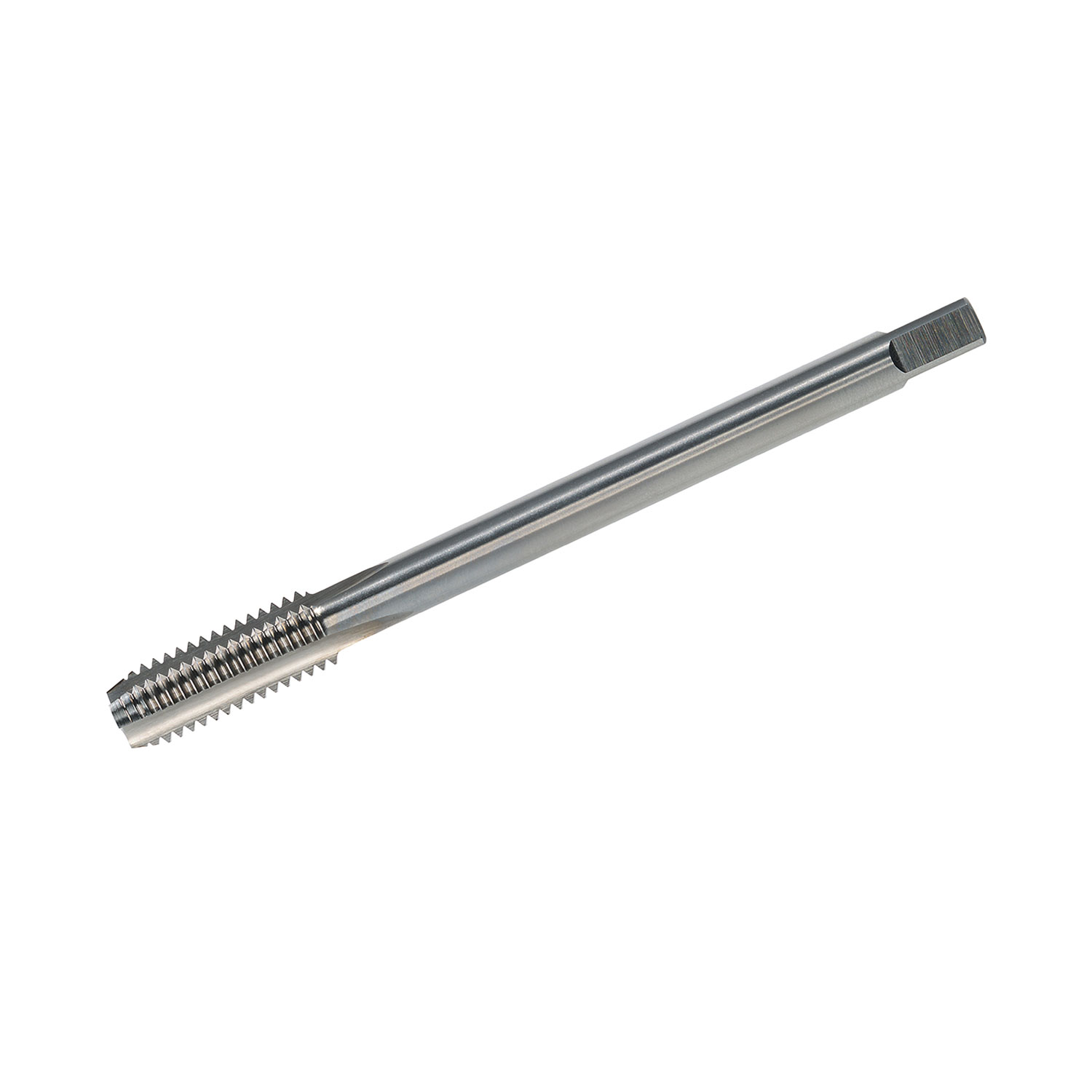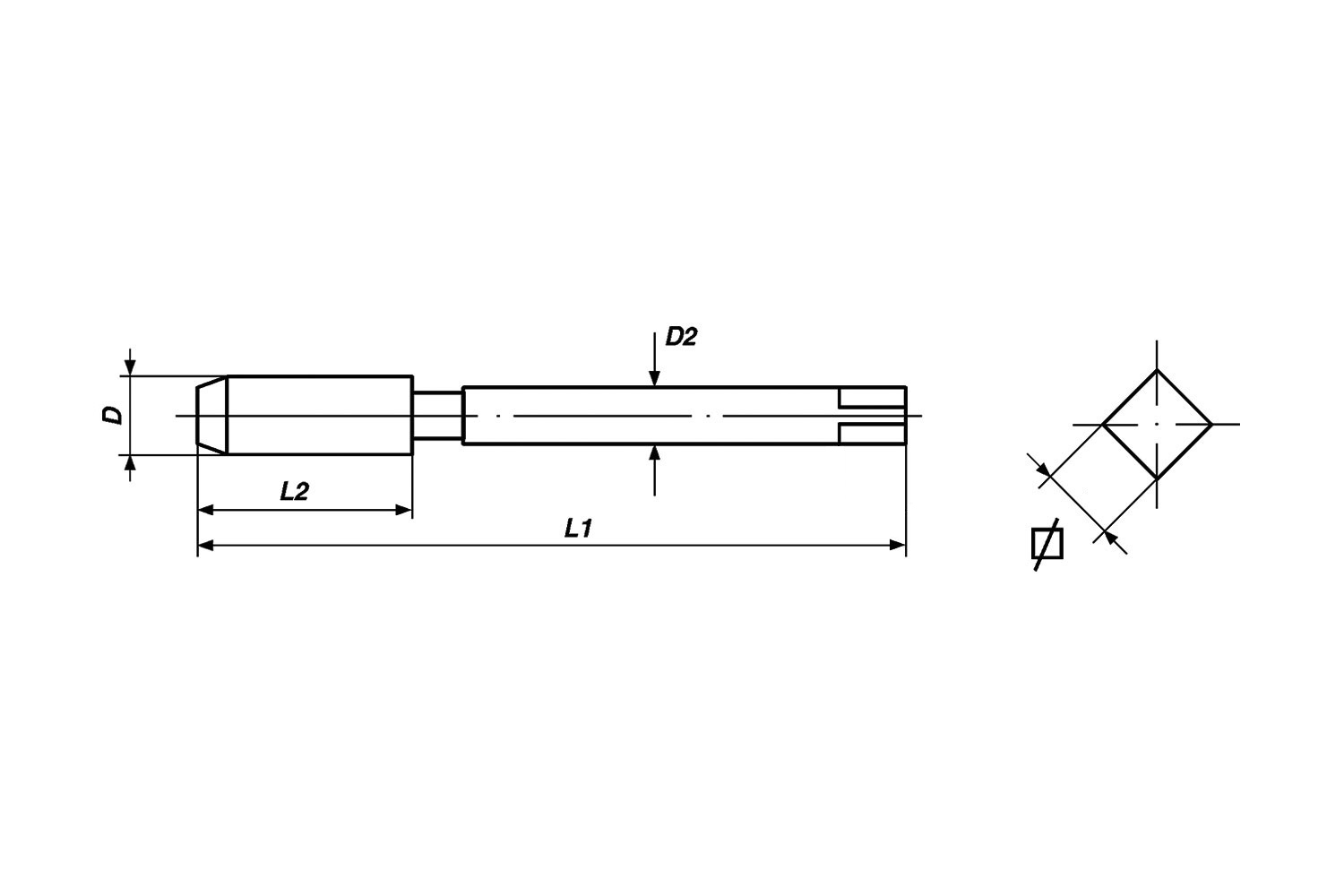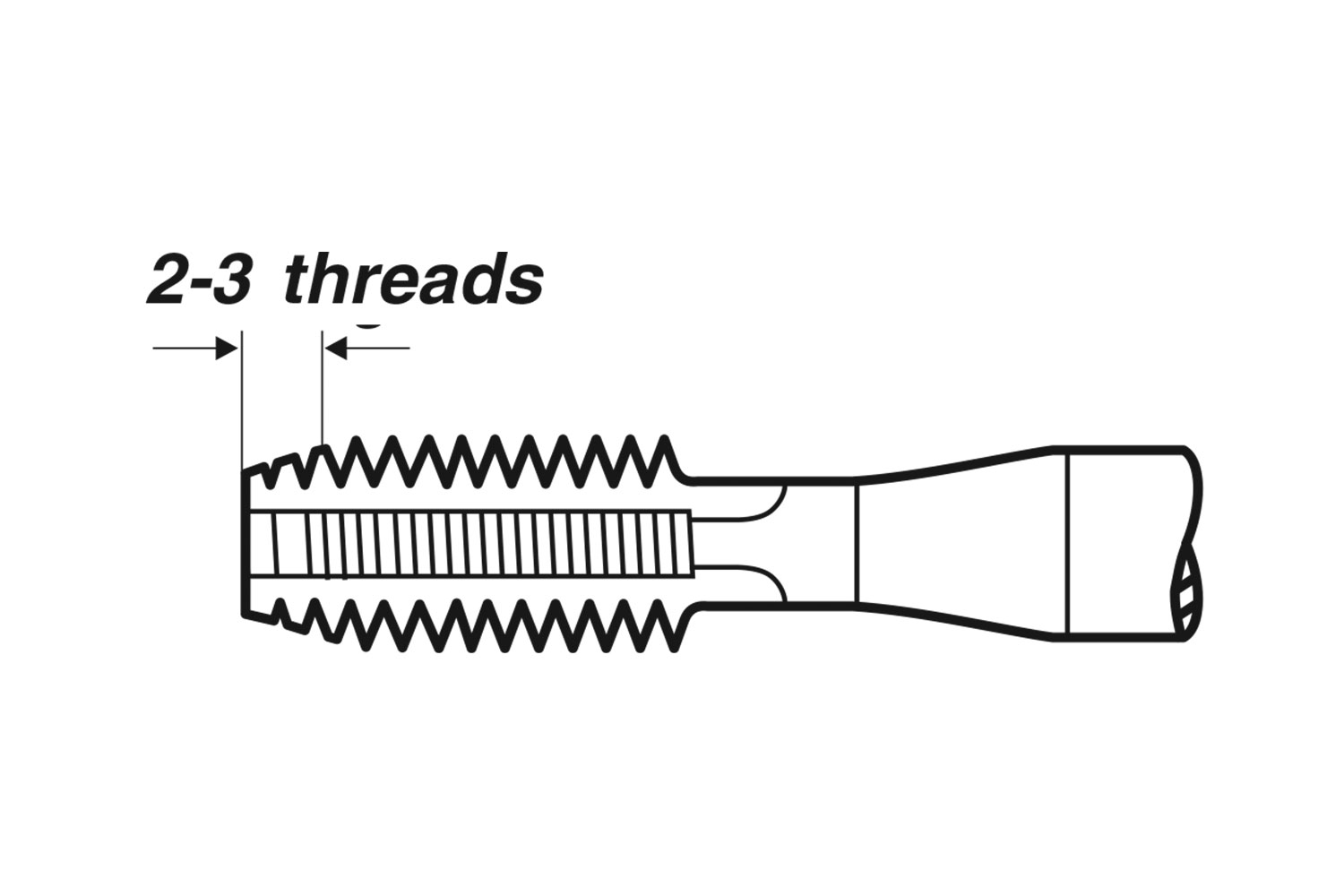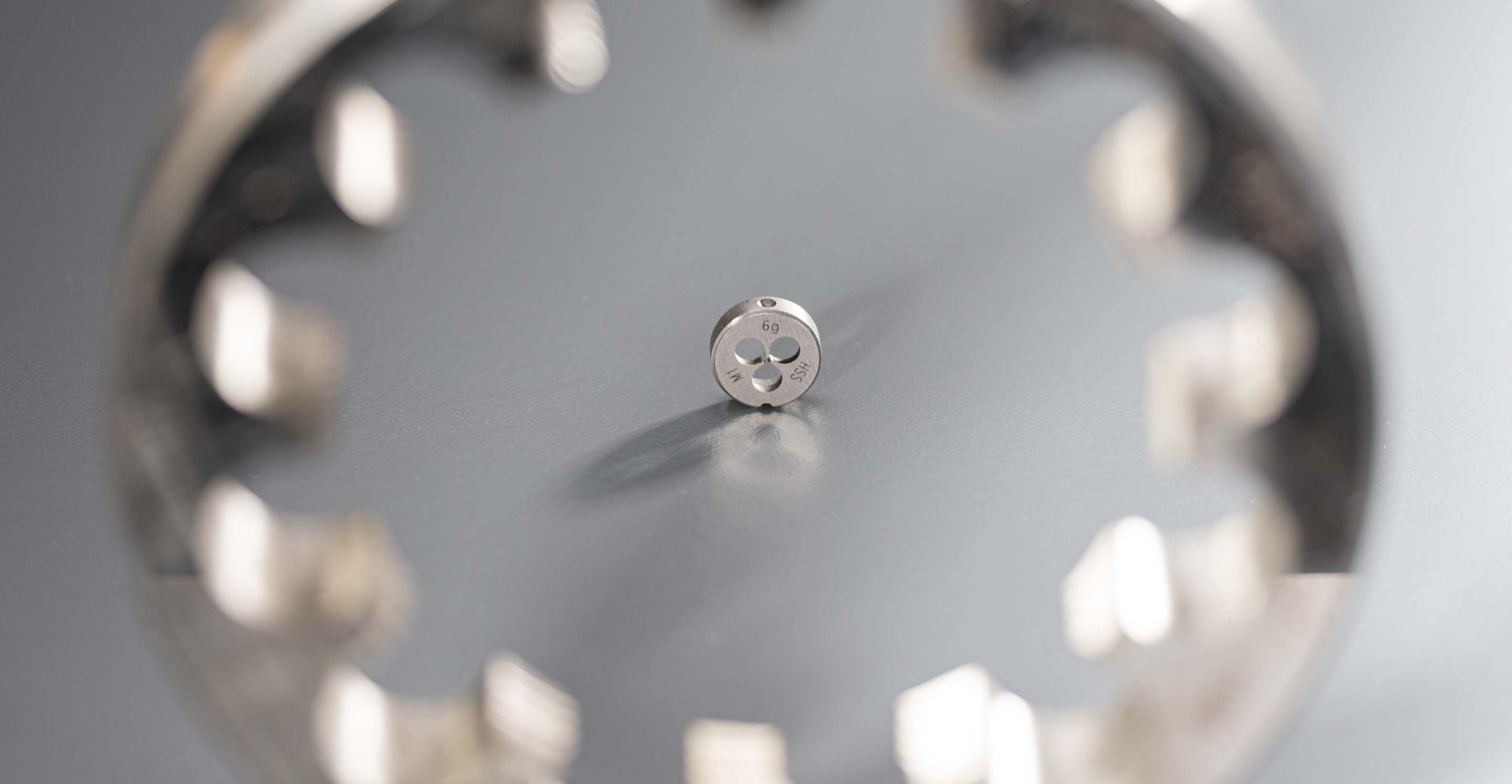Machine Tap DIN 374 Form C HSSE - Rd 20 x 1/8
€209.00
VÖLKEL delivers exclusively to specialized dealers. Online you can buy VÖLKEL products here.
The prices are in Euro plus VAT and shipping, insurance and packaging costs.
VÖLKEL Machine Tap DIN 374 Form C HSSE - Rd
This special machine tap is not a traditional cutting tool, but rather serves to maintain existing threads. It cleans and reshapes the thread profile in a chipless process, which ensures the material's grain flow remains intact. The round thread form makes the thread spindle highly resistant to dirt and damage, which is why it is used in safety-critical applications such as in nuclear power plants.
Application
- for general use
- machinable materials up to 900 N/mm²
- unalloyed and low-alloyed steels
- for through and blind holes
Step-by-Step Instructions
- Preparation: Clean the existing thread hole as much as possible from coarse contaminants.
- Tool Mounting: Securely and straightly clamp the round thread tap in your machine's holder.
- Lubrication: Use a suitable cutting oil to reduce friction and protect the tool.
- Cleaning: Start the machine and slowly feed the tool into the existing thread with a steady feed rate. No new chips are created; the thread profile is simply re-formed and cleaned.
- Retraction: After the tool has passed through the entire thread, reverse it to retract.
- Inspection: Check the cleaned thread for smooth operation and functionality.
Technical Data
- Thread Type: Round Thread DIN 405
- Standard: DIN 374
- Form: Form C
- Material: HSSE
- Tolerance: 7H
Frequently Asked Questions (FAQ)
Q: What are round threads?
A: Round threads (Rd) are a type of sliding thread. Their unique feature is their rounded profile, which makes them highly resistant to damage and dirt. They can also handle very high forces. A typical designation is, for example, Rd 20×1/8, where the pitch is specified in inches (here 1/8 inch = 3.175 mm).
Q: Where are round threads used?
A: Due to their robust properties, round threads are often used in areas with high loads or exposure to dirt. Examples include coupling and brake spindles on railway cars, large valves, and gates. In nuclear power plants, they are regularly cleaned to ensure safety.
Q: What is the difference between a round thread tap and a standard tap?
A: A standard tap cuts a thread into a plain hole (chip-producing). A round thread tap, on the other hand, is a maintenance and cleaning tool. It is guided into an existing round thread to clear it of contaminants and to rework the profile, without cutting any new material.
Q: Why are round thread taps important for maintenance?
A: In many safety-critical applications, threads must be maintained regularly to ensure their functionality. The round thread tap allows for quick and efficient cleaning without weakening the existing thread structure. It is therefore an indispensable tool for professional maintenance.
Q: What does the material designation HSSE mean?
A: HSSE (High Speed Steel with Cobalt) is a high-performance alloyed high-speed steel. The addition of cobalt significantly increases the tool's hardness and temperature resistance. This makes the tool particularly wear-resistant and durable, which is a great advantage when cleaning dirty and possibly hardened threads.
Have more questions? We're happy to help! You can reach us anytime via our contact form.
| Type of thread | knuckle thread |
|---|---|
| Standard | DIN 374 |
| Form | Form C |
| Material | HSSE |
| Tolerance | 7H |
| Size | Rd 20 x 1/8 |
| Overall length (L1) | 140 mm |
| Thread length (L2) | 32 mm |
| Core hole diameter (D1) | 17.5 mm |
| Shank diameter (D2) | 16.0 mm |
| Drive connector | 12.0 mm |
| EAN | 4022835794486 |
| Item number | 79448 |
| Type of flute | straight fluted |
| Application | for through and blind holes |
| Thread standard | DIN 405 |
VÖLKEL Machine Tap DIN 374 Form C HSSE - Rd
This special machine tap is not a traditional cutting tool, but rather serves to maintain existing threads. It cleans and reshapes the thread profile in a chipless process, which ensures the material's grain flow remains intact. The round thread form makes the thread spindle highly resistant to dirt and damage, which is why it is used in safety-critical applications such as in nuclear power plants.
Application
- for general use
- machinable materials up to 900 N/mm²
- unalloyed and low-alloyed steels
- for through and blind holes
Step-by-Step Instructions
- Preparation: Clean the existing thread hole as much as possible from coarse contaminants.
- Tool Mounting: Securely and straightly clamp the round thread tap in your machine's holder.
- Lubrication: Use a suitable cutting oil to reduce friction and protect the tool.
- Cleaning: Start the machine and slowly feed the tool into the existing thread with a steady feed rate. No new chips are created; the thread profile is simply re-formed and cleaned.
- Retraction: After the tool has passed through the entire thread, reverse it to retract.
- Inspection: Check the cleaned thread for smooth operation and functionality.
Technical Data
- Thread Type: Round Thread DIN 405
- Standard: DIN 374
- Form: Form C
- Material: HSSE
- Tolerance: 7H
Frequently Asked Questions (FAQ)
Q: What are round threads?
A: Round threads (Rd) are a type of sliding thread. Their unique feature is their rounded profile, which makes them highly resistant to damage and dirt. They can also handle very high forces. A typical designation is, for example, Rd 20×1/8, where the pitch is specified in inches (here 1/8 inch = 3.175 mm).
Q: Where are round threads used?
A: Due to their robust properties, round threads are often used in areas with high loads or exposure to dirt. Examples include coupling and brake spindles on railway cars, large valves, and gates. In nuclear power plants, they are regularly cleaned to ensure safety.
Q: What is the difference between a round thread tap and a standard tap?
A: A standard tap cuts a thread into a plain hole (chip-producing). A round thread tap, on the other hand, is a maintenance and cleaning tool. It is guided into an existing round thread to clear it of contaminants and to rework the profile, without cutting any new material.
Q: Why are round thread taps important for maintenance?
A: In many safety-critical applications, threads must be maintained regularly to ensure their functionality. The round thread tap allows for quick and efficient cleaning without weakening the existing thread structure. It is therefore an indispensable tool for professional maintenance.
Q: What does the material designation HSSE mean?
A: HSSE (High Speed Steel with Cobalt) is a high-performance alloyed high-speed steel. The addition of cobalt significantly increases the tool's hardness and temperature resistance. This makes the tool particularly wear-resistant and durable, which is a great advantage when cleaning dirty and possibly hardened threads.
Have more questions? We're happy to help! You can reach us anytime via our contact form.




